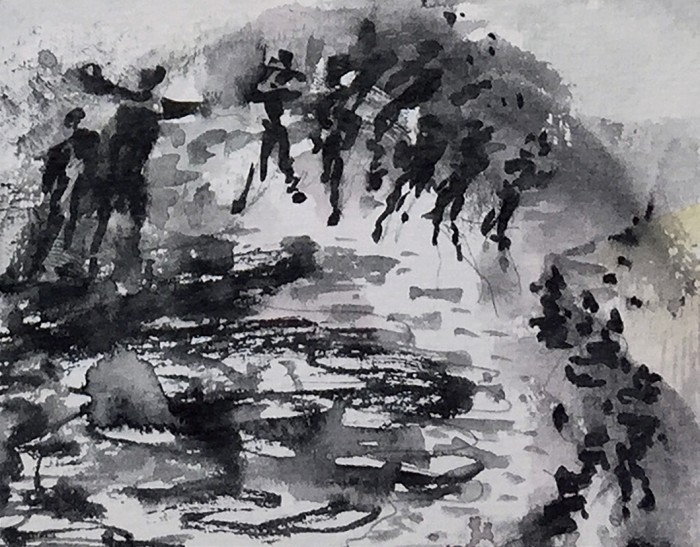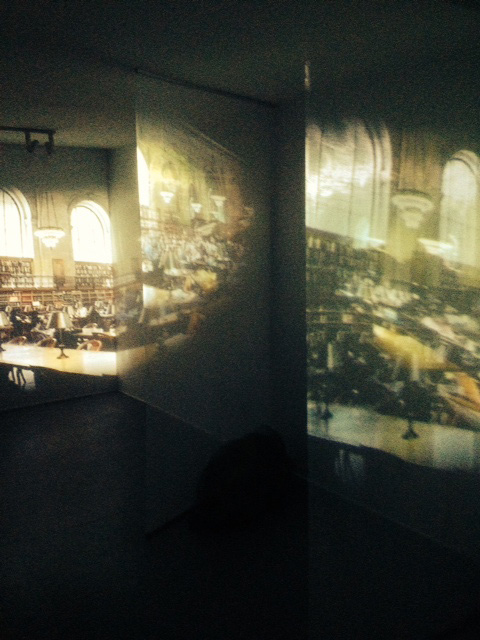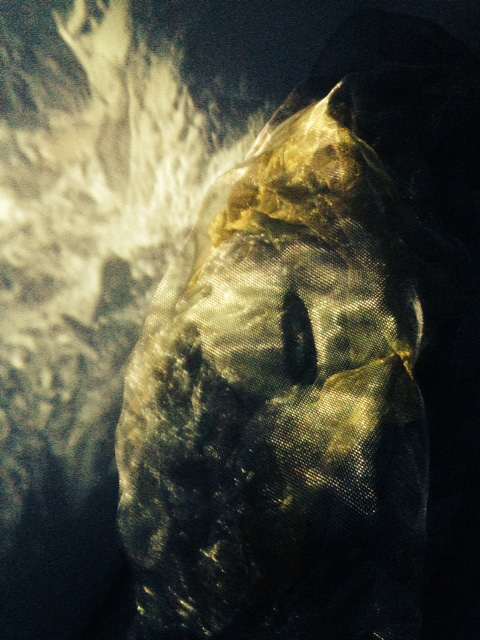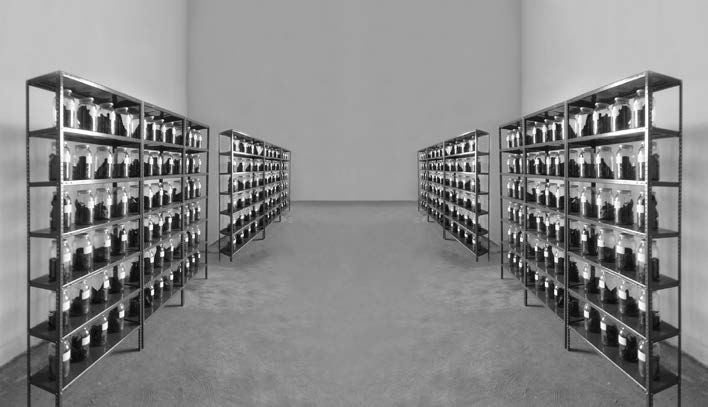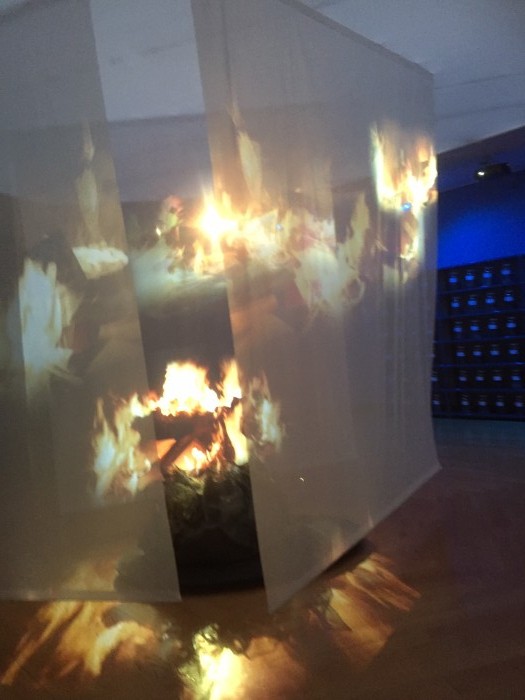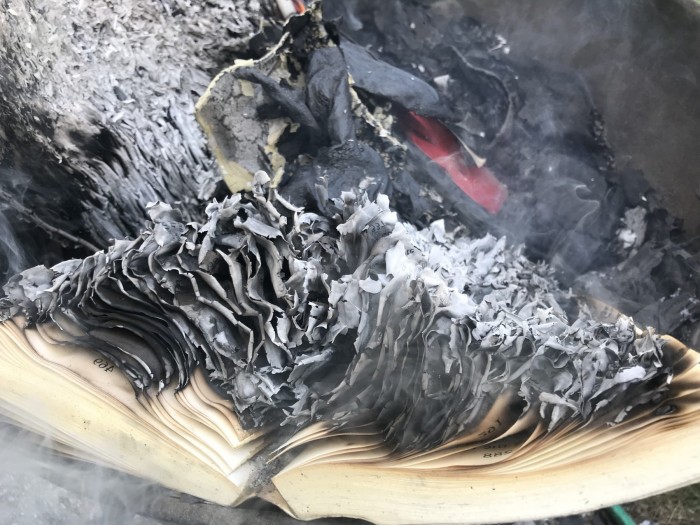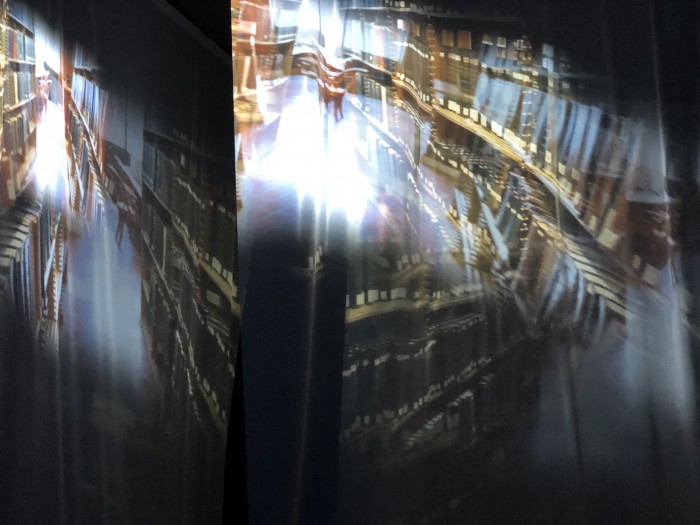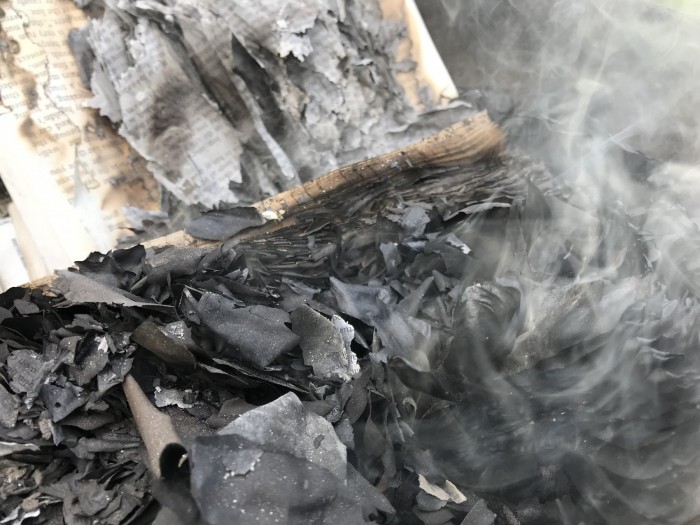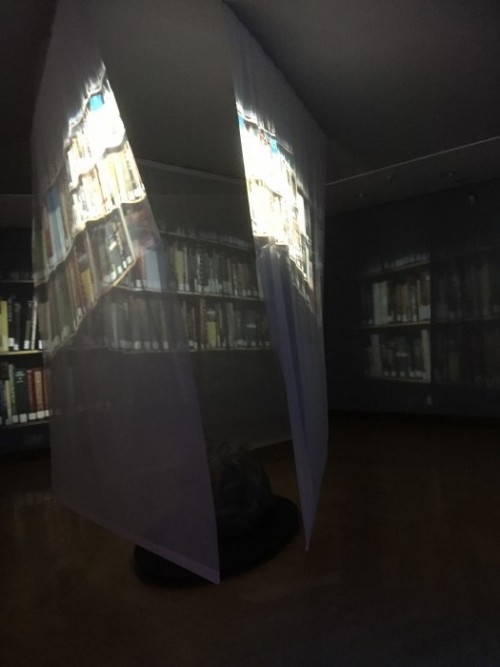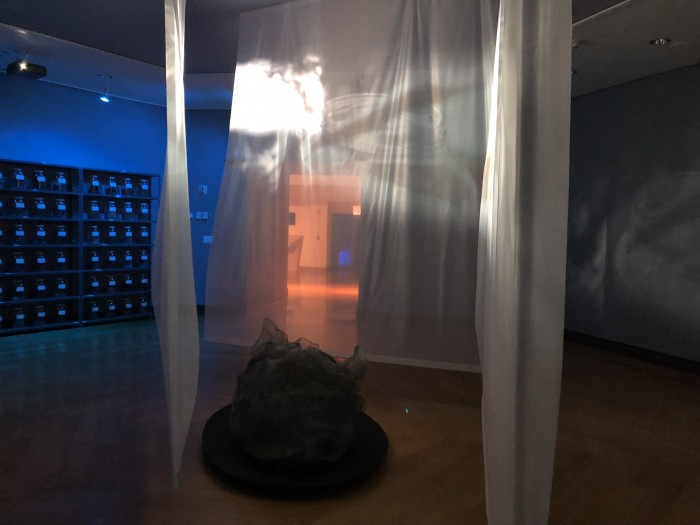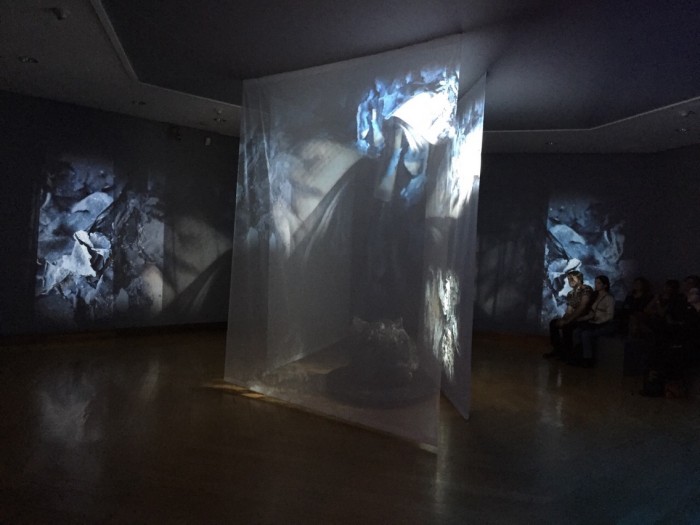No products in the cart.
BOOKBURN / Library of Books Burned
Above: BOOKBURN 2nd edition catalogue cover, 2018
On the first night of the Hungarian uprising of 1956, a boy named George Peck was awakened by the sound of a plate glass window being smashed downstairs. George rolled out of bed and looked out his bedroom window to see an anti-Soviet mob trashing the Russian bookstore downstairs. The shop carried not only Soviet propaganda literature but also the work of Tolstoy, Dostoevsky, and the great Russian writers. Books by the armload were being passed through the shattered storefront and dumped into a pile on the cobblestoned street as George watched. The pile of books was sparked and soon blazed away as the mob jeered and continued to fling more books into the flames as fuel. George watched the mob burn the books late into the night from his perch just above the storefront. It was a night that marked him for decades to come.
On the 9th of November 2013, a Hungarian neo-Nazi group donned camouflage fatigues and burned books in multiple locations across Hungary. The neo-Nazi group’s intent was to burn literature and culture that ‘poison our lives’ which to their thinking included both pornography and the works of Jewish Hungarian writers like Imre Kertesz, the noble prize winning author and survivor of Auschwitz, and the poet Miklos Radnoti who was shot into a mass grave in 1944 after months in a labor camp and on a forced march.
The members of the neo-Nazi group felt that they should share what they had done with the world, and they could barely wait for the embers to die out before they began to post pictures of their book burnings to the web. Within hours, the story was being covered by online journalists in Hungary, and within the next few days international news outlets both reported the events and printed op-eds condemning them. George Peck read about them in an op-ed in the Guardian penned by the Hungarian piano maestro Andras Schiff. He was transported back to that fiery night of book burning he witnessed as a boy.
George emailed me the op-ed and pictures of the books being burned by the neo-Nazis. One picture George sent me showed a pile of burning books on top of which could be seen a book of Radnoti’s poems, the name of Miklos Radnoti boldly emblazoned on a cover moments before it would be consumed by the flames. George knew the picture would be of interest to me. You see, George and I had a history. Eight years earlier we had met one night at a nearly deserted television station in Budapest, introduced by a mutual friend. George had been in town for his exhibition Projected Paintings at the Ernst Museum, and I was finishing up the last shoot for a documentary I was making on the life and poetry of Miklos Radnoti. A few days after we met, we chanced to be on the same flight back to New York City, and also by chance happened to be sitting next to each other. After eight hours of conversation and wine at 36,000 feet, it was as Humphrey Bogart once said to Claude Rains, the beginning of a beautiful friendship. Our transatlantic conversation continued after we landed back home in New York City, and evolved into a collaboration on ideas which has continued for many years now.
When George first saw those images of books burning in Hungary, he was appalled, angry, horrified. They resonated with him all the way back to that book burning that signaled the end of his childhood. He felt that he needed to respond somehow, and he knew that I would feel the same and so he called me. By the time that we rung off a short while later we had made a pact to create a piece that would express our complete opposition to the violent destruction of culture that burning books represented for us.
As artists we come from different places. George’s trajectory as an artist has taken him from painting to combining video projection with a place-specific environment to deconstruct two dimensional representation. While many would not see a connection between his monochromatic paintings of the 1970s and his recent projected paintings, what they have in common conceptually is a desire to break down the “fourth wall” of painting in order to create a more interactive relationship with the viewer, one that has become increasingly more immersive as George experimented with different mediums and techniques.
As a documentary filmmaker and writer, I have a strong drive to construct narrative. Together with George, we strove to create a new form of storytelling that would create an enveloping experience around a book burning. George began to storyboard and I began to write treatments, inspired by Hungarian filmmaker Robert Vas’ concept that artists and spectators alike must have ‘the courage of looking into the face of history.’ Like jazz musicians, we riffed off of each other’s ideas, words, and images going back and forth between us over months and years. As we delved into the history of book burnings, it became clear that it was a phenomenon not limited to a particular time or place or ideology, and that throughout recorded history there was always some group trying to wipe out the culture of another group. Even here in the United States, different groups with different agendas recently burned the Harry Potter books and the Koran. Book burnings are not way-back-when and over there, but here and now and seemingly always. And we wished to reflect that in a piece that would tell a universal story.
Our creative process organically led us from conception to production of BOOKBURN / Library of Books Burned. In the following pages you’ll see some of George’s early storyboards, as well as images from the first version of the installation that was created in George’s studio, that led up to the first public version of the piece that will ‘premiere’ at the Museum of Jewish Heritage – A Living Memorial to the Holocaust.
As I write this, it is five years after the events in Hungary that moved us to action, and sixty-six years after the book burning George experienced as a boy. George and I both feel it is more important than ever to decry attacks on culture, and to stand against those whose self-proclaimed intentions are to ‘purify’ our society. If our piece upsets or disturbs, we hope that it will also provoke conversation and dialogue.
Hugo Perez
George Peck
Above: watercolor on paper, George Peck, 2014
Above: installation shot, Museum of Jewish Heritage, 2018
Four streams of video simultaneously projected on a series of scrims and walls create an immersive environment through which the spectator walks and becomes a participant. At the center of the installation is a sculptural “pyre” on which the flames of the burning books are projected. A soundscape accompanies the visual narrative.
The narrative itself begins in the orderly world of a library, dissolves into the chaos of a book burning, and concludes with an anonymous figure salvaging the remains of the books that we have termed ‘ashes’. These ashes are jarred, labeled, and shelved into a LIBRARY OF BOOKS BURNED.
Above: closeup installation in studio
Above: closeup installation in studio
Above: watercolor on paper, George Peck, 2014
Above: installation shot, Museum of Jewish Heritage, 2018
Above: studio installation of Library of Books Burned
Above: studio installation of Library of Books Burned
BOOKBURN / LIBRARY OF BOOKS BURNED is meant to reflect on the idea that book burning is a form of cultural self-immolation in which those who destroy books are destroying themselves, and those who stand by are complicit. It has been said that wherever books are burned so too are people killed, but equally true is that where people are killed books will also be burned. Our hope is that by placing the spectator in a central – and complicit – position, we can present to them not only a portrait of this insidious form of censorship, but moreover cause the viewer to consider passivity and inaction as part of what enables censors to shape history.
One interesting note on the production aspect of our installation: the books that were burned for purposes of filming are library discards that otherwise would be pulped or disposed of in a landfill.
When I examine my own revulsion to book burning, I take note of the moral component. It is the same horror I feel when people are ignorant of history; it seems a betrayal of the fragile collective enterprise of civilization. Knowledge of history is won with great difficulty, by moral virtues as well as purely intellectual ones. To throw any of them away dishonors our ancestors and cheats our descendants. The act of collecting ashes of books and creating a LIBRARY OF BOOKS BURNED is an act of hope and optimism. This concept not only stands for memory, but also has a dazzling and magnetic visual power beyond the literal and the emotional.
-George
Above: installation shot, Museum of Jewish Heritage, 2018
Books civilized me when I was a bright, feral child – the kind of child that would probably be medicated today. Books were my medicine, words and stories nurtured me and introduced me to a larger world than the one in which I lived. Books continue to be a large part of my life, the crutch I lean on when I am seeking something more than who I am and where I am. For me, the act of burning books is an act of suicide, a wiping away of who we are, a return of the brutish time before we learned to leave our mark in the world. BOOKBURN and LIBRARY OF BOOKS BURNED are works that in a way seem to have been created by some figure in the future who looked back at our time and asked the question: how could they have allowed it to happen?
-Hugo
Above: Burned book, photograph, Hugo Perez, 2018
Above: installation shot, Museum of Jewish Heritage, 2018
Above: burning book, photograph, Hugo Perez, 2014
Above: installation shot, Museum of Jewish Heritage, 2018
Above: installation shot, Museum of Jewish Heritage, 2018
Above: installation shot, Museum of Jewish Heritage, 2018
Above: installation shot, Museum of Jewish Heritage, 2018
Complete list of books used in the exhibition at the Museum of Jewish Heritage – A Living Memorial to the Holocaust in 2018:
The Little Town, by Sholem Asch
The Executioners, by Henri Barbusse
Grand Hotel, by Vicki Baum
The Entrance to the Stage, by Vicki Baum
Woman and Socialism, by August Bebel
Women Under Socialism, by August Bebel
My Life, by August Bebel
The Intellectual Ability of Women, by August Bebel
The Threepenny Opera, Bertolt Brecht
Drums in the Night, by Bertolt Brecht
A Respectable Wedding, by Bertolt Brecht
Driving Out a Devil, Bertolt Brecht
Paganism, Christianity, Judaism: A Credo, by Max Brod
The Height of Feeling, by Max Brod
On the Beauty of Ugly Pictures, by Max Brod
Woman’s Work, by Max Brod
Adel, by Richard Nikolaus Coudenhove-Kalergi
Pan Europa, by Richard Nikolaus Coudenhove-Kalergi
Practical Idealism, by Richard Nikolaus Coudenhove-Kalergi
The War, Etchings, by Otto Dix
An American Tragedy, by Theodore Dreiser
Sister Carrie, by Theodore Dreiser
The Financier, by Theodore Dreiser
Jennie Gerhardt, by Theodore Dreiser
The Condition of the Working Class in England, by Friedrich Engels
Socialism: Utopian and Scientific, by Friedrich Engels
Dialectics of Nature, by Friedrich Engels
Success, by Lion Feuchtwanger
Jud Suess, by Lion Feuchtwanger
The Ugly Duchess, by Lion Feuchtwanger
Oil Imperialism: The International Struggle for Petroleum, by Louis Fischer
Authority and Freedom, by Friedrich Wilhelm Förster
The Art of Living: Sources and Illustrations for Moral Lessons, by Friedrich Wilhelm Förster
The Interpretation of Dreams, by Sigmund Freud
Civilization and its Discontents, by Sigmund Freud
The Ego and the Id, by Sigmund Freud
Beyond the Pleasure Principle, by Sigmund Freud
Class of 1902, by Ernst Glaeser
Peace, by Ernst Glaeser
The Land Without Unemployment; Three Years of the Five Year Plan, by Ernst Glaeser
Marked Man, by Georg Grosz
The Face of the Ruling Class, by Georg Grosz
Unmasked History, by Werner Hegemann
A Farewell to Arms, by Ernest Hemingway
The Fateful Hour of German Economic Policy, by Rudolf Hilferding
Finance Capital, by Rudolf Hilferding
Socialism in Theory and Practice, by Morris Hillquit
Fabian, by Erich Kästner
The 35th of May, or Conrad’s Ride to the South Seas, by Erich Kästner
The Economic Doctrines of Karl Marx, by Karl Kautsky
Thomas More and his Utopia, by Karl Kautsky
The Social Revolution, by Karl Kautsky
Foundations of Christianity A Study in Christian Origins, by Karl Kautsky
How I Became a Socialist, by Helen Keller
Caprichos, by Alfred Kerr
Franz von Sickingen, Ferdinand Lassalle
Imperialism, the Highest Stage of Capitalism, by Vladimir Lenin
The Revolt of Modern Youth, by Benjamin Barr Lindsey
The Companionate Marriage, by Benjamin Barr Lindsey
The Iron Heel, by Jack London
The Jacket, by Jack London
Martin Eden, by Jack London
Bismarck: The Story of a Fighter, by Emil Ludwig
Napoleon, by Emil Ludwig
The Son of Man, by Emil Ludwig
Lincoln, by Emil Ludwig
The Accumulation of Capital, by Rosa Luxemburg
Social Reform or Revolution, by Rosa Luxemburg
Man of Straw, by Heinrich Mann
Professor Unrat, by Heinrich Mann
Berlin: the Land of Cockaigne, by Heinrich Mann
The Pious Dance, by Klaus Mann
Alexander: A Novel of Utopia, by Klaus Mann
An Appeal to Reason, by Thomas Mann
The German Republic, by Thomas Mann
Das Kapital, by Karl Marx
The Basic Principals of a Marxian Society, by Franz Oppenheimer
Social Problems and Socialism, by Franz Oppenheimer
Dawn of Humanity: A Document of Expressionism, by Kurt Pinthus
The New Society, by Walter Rathenau
Ten Days that Shook the World, by John Reed
All Quiet on the Western Front, by Erich Maria Remarque
The Dream Room, by Erich Maria Remarque
The Road Back, by Erich Maria Remarque
The Uprising of the Fishermen of Santa Barbara, by Anna Seghers
The Jungle, by Upton Sinclair
The Brass Check, by Upton Sinclair
Oil, by Upton Sinclair
Foundations of Leninism, by Josef Stalin
The Road to October, by Josef Stalin
Hinkemann, by Ernst Toller
Transfiguration, by Ernst Toller
Learn to Laugh Without Crying, by Kurt Tucholsky
Gunnar’s Daughter, by Sigrid Undset
The Dark Pilgrimmage, by Jakob Wassermann
The World’s Illusion, by Jakob Wassermann
The Outline of History, by H.G. Wells
The Real Situation in Russia, by Leon Trotsky
The Case of Sergeant Grischa, by Arnold Zweig
Jeremias, by Stefan Zweig



